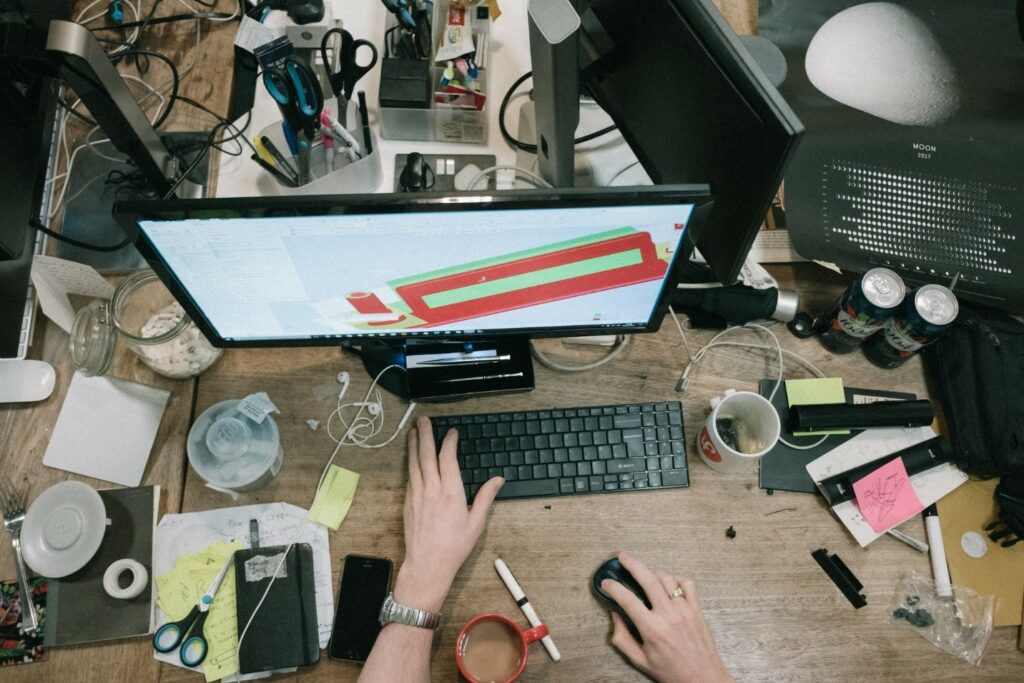We’re all guilty of accruing things we don’t really need, both at home and work. From defunct tech to jammed staplers to historied paperwork, we can’t seem to let go of out-of-date clutter. While one person in an office showing some hoarding tendencies like these is a minor issue, if the whole workforce is guilty of keeping items ‘just in case!’ then you could have a real problem.
Clutter in the office isn’t just an eyesore — crafting an immediate poor first impression for external guests — it can even affect workplace efficiency and become a safety issue. With these cons in mind, read on for six easy ways to reduce the clutter in your office.
1. Shred Paperwork
One simple way to rid yourself of office clutter is to shred old, expired papers with help from a reliable document destruction company. Maintain this new good habit moving forward by scheduling routine shredding: an excellent opportunity to regularly rid your office of sensitive and defunct paper.
Not only are you clearing unnecessary debris, but you’re likely removing the potential for a data breach.
2. Tackle Office Stationery
Desks that are covered in old pens, broken pencils, dried-up highlighters and used-up post-its are undoubtedly an eyesore. Furthermore, a cluttered desk has been found to lower motivation among workers; it may even lead coworkers to undermine each other’s productivity.
Look for recycling opportunities in your area for expired stationary and invest in desk tidies for the stationary still in use.
3. Recycle Furniture
Desks break, and chairs need to be updated. If your office has a corner or even an entire room that’s slowly filling with old furniture, offer replacements to current employees — you might find that one of them has been toiling with a chair that won’t turn or lower. In the spirit of community, offer old furniture that’s surplus to requirement to neighbouring businesses, or reach out to local community groups to see if they’d like to pick up some freebies.
According to the United States Environmental Protection Agency, “up to 8.5 million tons, or 17 billion pounds, of office assets end up in US landfills annually.” By keeping on top of excess resources, you’re not only ensuring an orderly workplace, but you’re also helping to reduce the ongoing strain on local landfill — a boost to any company’s environmental impact.
4. Rearrange
Once you’ve got a handle on overflowing files, excess stationary, and the growing corner of old furniture, rearrange your office to craft better cohesion and flow. Doing this will empower you to see other areas that are maybe getting a little unruly while also regaining control of the space.
5. Invest in Organizational Strategies
For one, cable tidies under individual desks not only help keep cables organized and orderly, but they’re also an excellent safety tool.
Organized ‘desk tidies’ (collective times when everyone commits to cleaning up) are beneficial not only to keep working stationary in order but they can also help keep a handle on what’s broken and no longer required.
Another great opportunity for organization is investing in ‘for shredding’ bins for old paperwork.
6. Implement Processes
Providing team members with new organizational tools is great — but only if they’re used to their full potential. Often, a new rule will ensure your organizational tool is used correctly. For example, if you invest in bins for expired paperwork, implementing a policy whereby papers for destruction go into these bins at the end of every shift is worth serious consideration.
The Bottom Line
By investing in the right tools and keeping a handle on clutter by implementing new processes, you’re setting your office up to be tidy and orderly for the foreseeable future. Tidying up means creating a great first impression, reducing any potential risk of tripping, and boosting office efficiency. So why not get started today?
